
Liquid oxygen as a gas supply for oxygen rebreathers
Liquid oxygen has been used in breathing systems since the 1920s. The principle is relatively simple. Liquid oxygen has a temperature of approximately -185 degrees Celsius (-301 F) and will evaporate at room temperature. By allowing the gas to come into contact with the breathing gas via the principle of a heat exchanger, the gas will evaporate even faster (approx. 10%). The resulting gas can be used to maintain breathing. The problem with this type of system is that the evaporation process takes place at atmospheric pressure and therefore, without additional technology, it can only be used under atmospheric conditions. A further disadvantage is that the liquid oxygen (LOX) requires special storage containers and must be handled with care because it is not resistant to mechanical impact. Should a heavy object fall on the liquid oxygen, it will explode.
Several systems have been used successfully in mining and for rescue systems, but the technology has never gained a large-scale foothold.
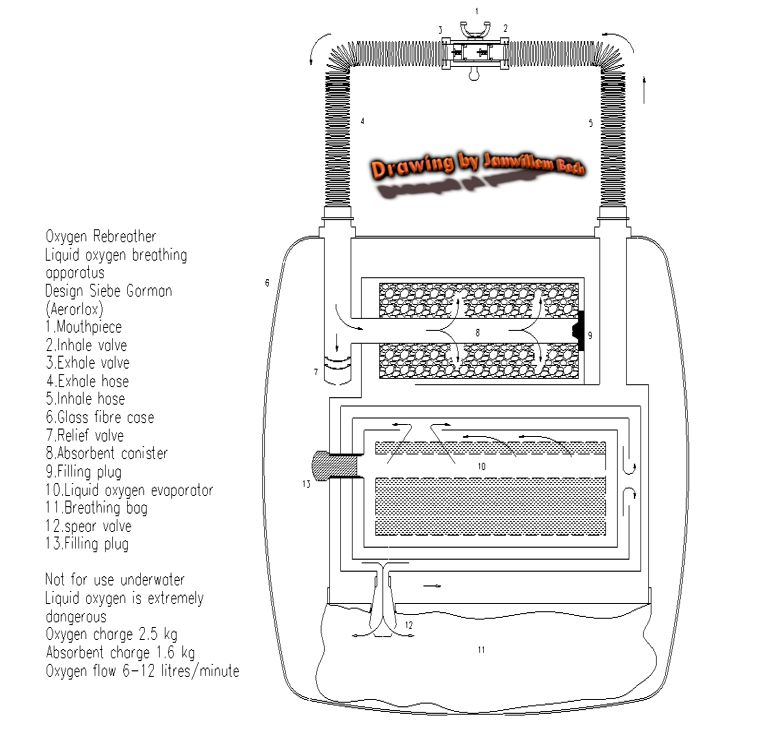
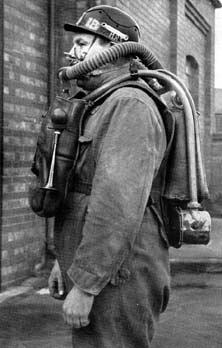
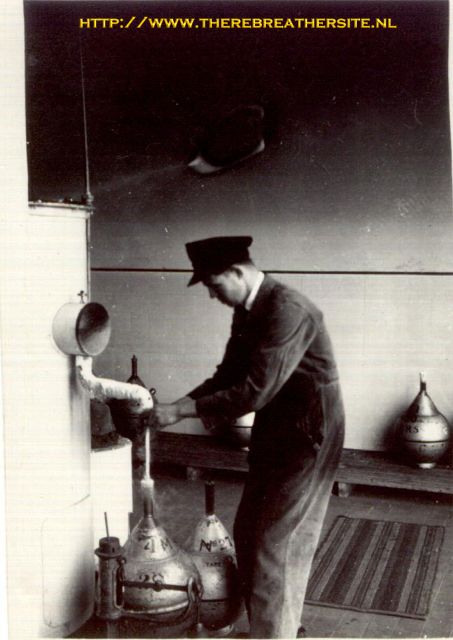
A double-walled vessel with a vacuum between the walls to reduce the transfer of heat. Used for the storage of liquid gases and for other laboratory applications. Named after the British physicist, James Dewar (1842-1923).
More information: http://www.healeyhero.co.uk/rescue/glossary/aerorlox.htm
This unique picture shows the filling of a so called DEWAR.
The man on the picture is Mr. Robinson Sr. the father of Brain Robinson who sent me this picture!
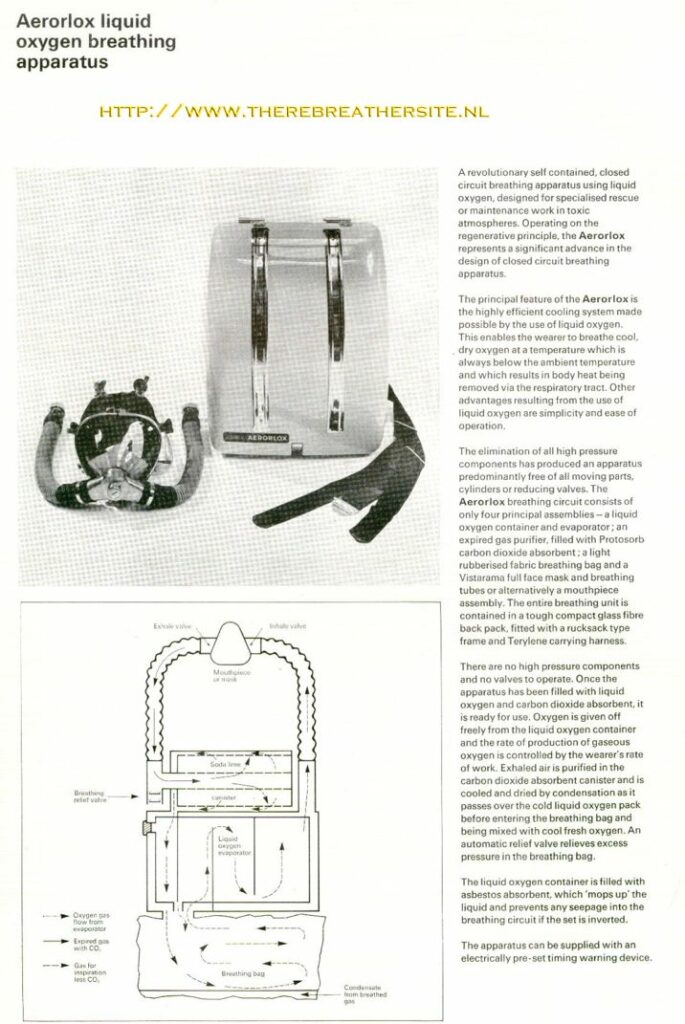
Drägerolith 1920
Mouthbreathing.
Device for breathing by means of liquid oxygen.
In any case, the amounts of deposited ice and snow from the room air is considerably less than from the air we breathe, and a very large space is available to you for flushing around the liquid oxygen container, which, when used, can be used for of 2 to 3 hours and is not endangered by blockages. It should also be mentioned that the air inhaled by this device is not subject to excessive cooling.
The vaporized oxygen is led through a special tube I into the breathing tube B, along this tube to the mouth. To increase the low temperature of the vaporized oxygen to a tolerable level, the oxygen tube I is located on the rear. The surface of the tube is formed into a long spiral with a large surface area.
When using the device, approximately 19 L of oxygen per minute is vaporized, which is directly supplied to the breathing. Excess breathing air escapes in bursts from an outlet valve every time the device is used. The valve is located on the side of the device.
In the diagram, A is the breathing mouthpiece, B is the breathing tube, C is the breathing bag, D is the external insulated equipment container, E is the cavity for holding the breathing bag, F is the container for liquid oxygen with its filling opening G, H the inlet and outlet openings for the room air to flow around the container for liquid air, I the tube for the vaporized oxygen, K the continuation of this tube as a flexible hose inside the breathing tube, L the exhalation valve, M the saliva catcher.
Since a larger amount of oxygen evaporates when the device is filled, there must be a surplus of liquid oxygen of 1.8 kg for each filling. The vessel for liquid oxygen provided with the device absorbs 3.5 kg (3.1 litres) of liquid oxygen (= a vaporised oxygen quantity of 2640 litres). In order to be able to fill this quantity, a supply of 5.3 kg (4.75 litres) of liquid oxygen is required.
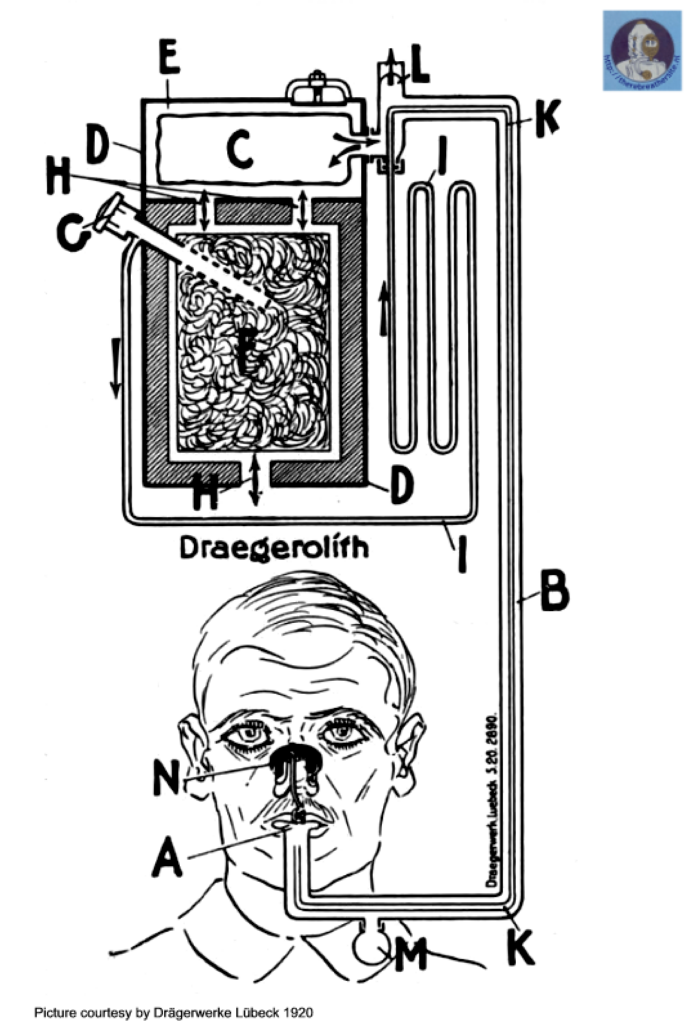
The prescribed filling with liquid oxygen is sufficient for a period of 2 hours during work. If the unit is not in use, slow evaporation takes place over a period of 4 1/2 hours at an outside temperature of 15 to 20 degrees. The average carbon dioxide content in the breathing air at medium work rate is 0.5% to 1 ,2 %. The average oxygen content of the breathing air at average work performance is approx. 92 %.
Weight: 12,000 kg.
Inventor: Dr.-Ing. h. c. Bernh. Dräger, Lübeck.
Manufacturer: Drägerwerk, Heinr. & Bernh. Dräger, Lübeck.
Translation by Jan Willem Bech, no rights can be derived from this document. Text originally from The Gerätewart spricht
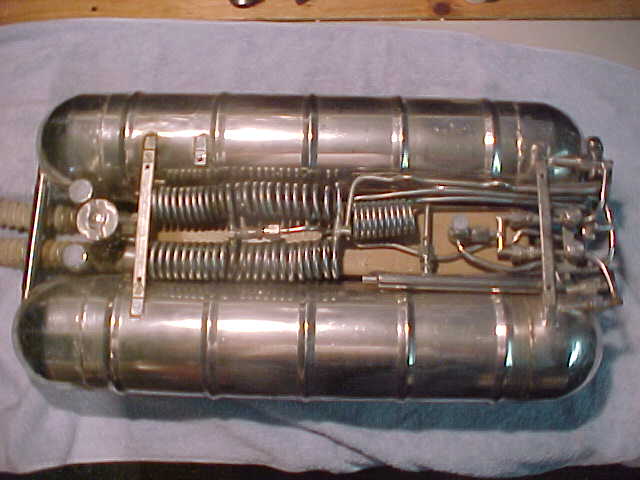
If you are looking for more in-depth information on liquefied gas rebreathers, there is also a very comprehensive page on this website. You can find it here.

Therebreathersite was founded by Jan Willem Bech in 1999. After a diving career of many years, he decided to start technical diving in 1999. He immediately noticed that at that time there was almost no website that contained the history of closed breathing systems. The start for the website led to a huge collection that offered about 1,300 pages of information until 2019. In 2019, a fresh start was made with the website now freely available online for everyone. Therebreathersite is a source of information for divers, researchers, technicians and students. I hope you enjoy browsing the content!
